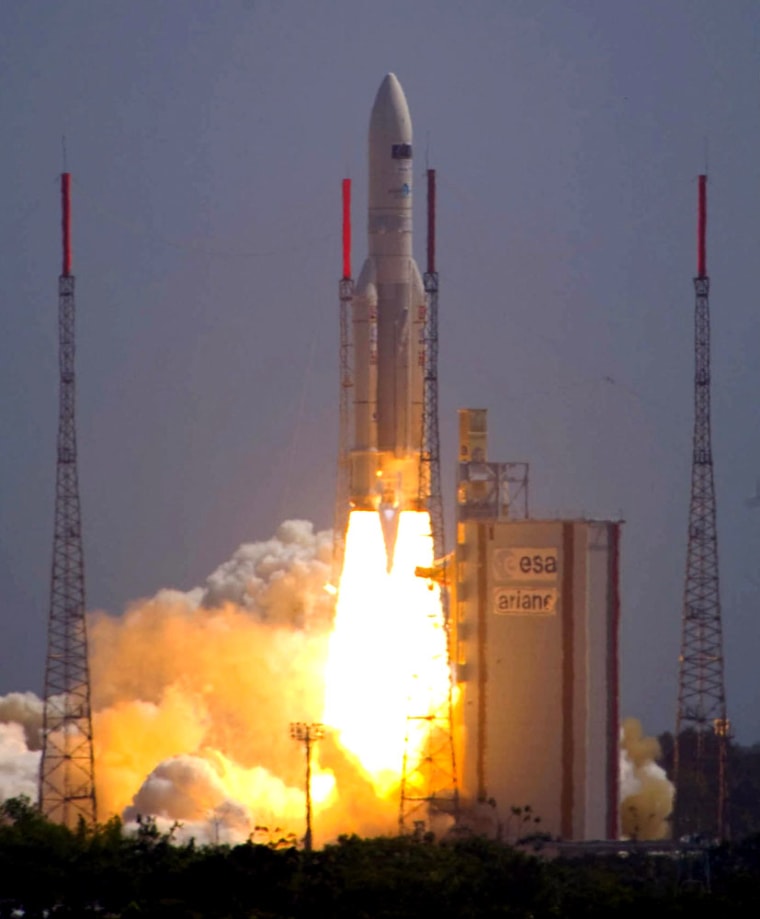Two European telescopes aimed at pushing astronomy's frontier closer to the big bang were successfully launched on their space odyssey on Thursday.
The Herschel and Planck spacecraft lifted off atop an Ariane 5 rocket from the European Space Agency's launch center in French Guiana at 9:12 a.m. ET, and within a half-hour ground controllers reported that both probes had separated successfully from the Ariane.
Herschel and Planck are headed on separate trajectories to a gravitational balance point 1 million miles (1.6 million kilometers) from Earth, known as L2. From that vantage point, they will make complementary studies of cosmic origins.
Herschel, which ESA says is the most powerful infrared telescope ever put into space, will explore the earliest stages in the development of stars and galaxies. In addition, it will be the most effective tool ever devised to look for the presence of water in outer space.
Planck, which observes in the microwave part of the spectrum, will study the faint imprint of radiation left behind by the origin of the universe more than 13 billion years ago. Planck's findings could shed additional light on the nature of mysterious dark matter and dark energy, which together make up more than 90 percent of the universe's content.
"Our previous images of the baby universe were like fuzzy snapshots — now we'll have the cleanest, deepest and sharpest images ever made of the early universe," Charles Lawrence, NASA Planck project scientist, said in a statement issued by the Jet Propulsion Laboratory.
In order to do their jobs, the instruments on both spacecrafts will be icy cold. Liquid helium will cool the coldest of Herschel's detectors to 459 degrees below zero Fahrenheit (0.3 Kelvin). Planck's coldest detectors, which are chilled by cutting-edge coolers developed in part by JPL, will reach a frosty 0.1 Kelvin — that is, a tenth of a degree above absolute zero.
Slideshow 12 photos
Month in Space: January 2014
Herschel will start preparing for science operations while en route toward its operational orbit, which should be reached in about two months. Four months later, the science mission will begin and is expected to last more than three and a half years. Planck will reach a similar orbit in roughly two months, with science observations beginning one month later. The mission's science operations are scheduled to last a minimum of 15 months, with the possibility of an extension.
“This dual launch is the crowning of some 20 years of hard work for the scientists who imagined these missions, the engineers who designed these satellites, the firms that built them and the ESA staff who coordinated all these efforts,” ESA’s director general, Jean-Jacques Dordain, said in a statement issued after the launch.
ESA says the mission price tags for the spacecraft plus launch and operations are $1.5 billion (€1.1 billion) for Herschel and $952 million (€700 million) for Planck.

